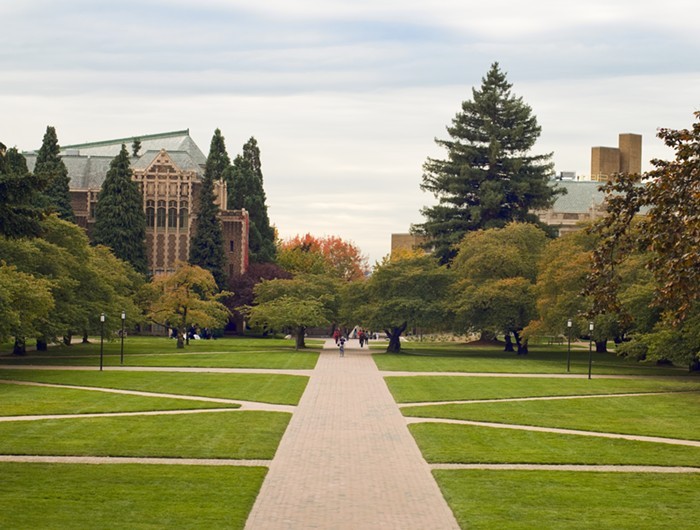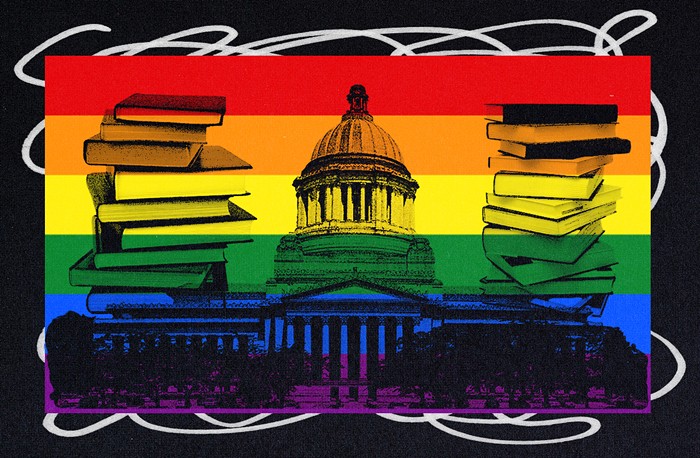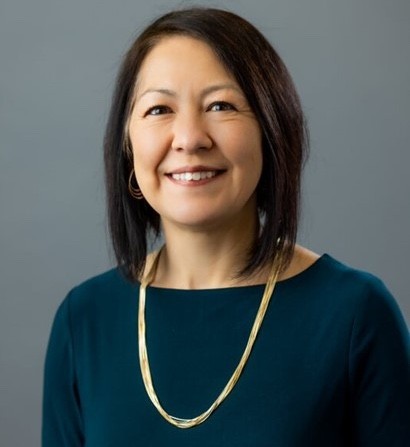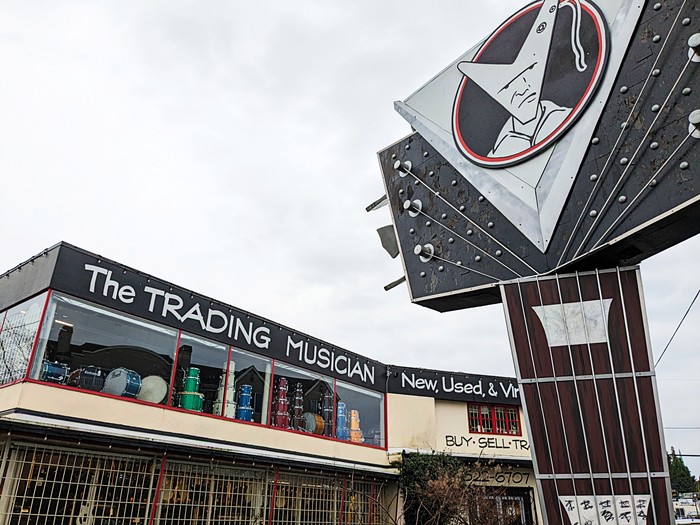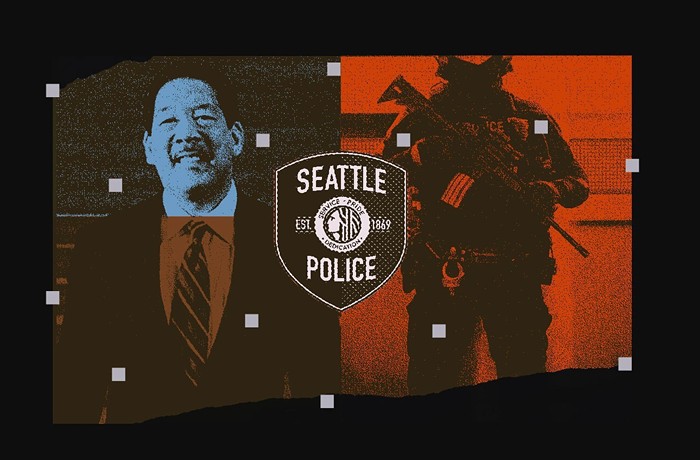The 520 bridge is going to sink. Highway workers have sealed more than 30,000 feet of cracks on the floating span between Seattle and Medina in just the past 16 years. Still, Lake Washington continues to seep into the concrete pontoons. "Bridge components have been sheared off because of severe rocking, and the pontoons are cracked and leaking from past storm damage," warns the Washington State Department of Transportation. "The frequent fixes and maintenance can't keep the bridge in safe shape forever, and it needs to be replaced."
Lawmakers agree that a catastrophe is inevitable unless we build a new bridge by 2014. (The aged floating Hood Canal Bridge sank in 1979, and the I-90 floating bridge sank 11 years later, both in storms.) But there is no consensus on how to rebuild 520. The costs are astronomical—at least $4.5 billion—which is more than the deep-bore tunnel under downtown.
While most state lawmakers are focused on reducing expenses, Seattle's elected leaders—including those in the state legislature, the city council, and the mayor's office—all want a 520 bridge that links to Seattle's growing mass-transit network.
"If we are talking about something to last 50 to 100 years," city council president Richard Conlin says, "we should consider making it a worthy investment instead of having people stuck in traffic for that length of time."
On November 17, a workgroup of state lawmakers—most from rural districts and the suburbs, which have little to gain from strengthening Seattle's transit network—voted on a plan to replace the bridge. According to the design they chose, the state would replace the four-lane span with a six-lane bridge and build a second drawbridge across the nearby Montlake cut to handle all the extra traffic. This is called Option A+. Only two lawmakers in the group voted against it: house Speaker Frank Chopp and state representative Jamie Pedersen. That's no coincidence. Chopp and Pedersen both represent Seattle's 43rd District, the only point in Seattle where the 520 bridge hits land. State senator Ed Murray (also from the 43rd District) opposes the workgroup's proposal as well.
The most obvious problem with the plan approved by the legislative workgroup is its failure to connect the new freeway with Seattle's future light-rail network. As it stands, the new "A+" 520 would only connect to a stop for bus riders (and future light-rail riders, if rail is fitted to the bridge) in the Montlake neighborhood. The problem: This A+ stop is across the Montlake cut from the planned light-rail stop at Husky Stadium—creating a considerable hike for people transferring between the two systems.
"This is an example of our disconnected transportation planning in the region," says Murray. "You have to get off at the transit station and then stumble over a few streets in the dark and the rain and get on a bus."
In the drawing above, you can see that one of the proposals for the 520 bridge includes an arm that reaches from the central shaft of the freeway over to the Husky Stadium light-rail station. If light rail is ever to be built on 520, this arm could connect light rail on 520 to the rest of the light-rail network. "I think that connecting Microsoft to the University of Washington is a good idea," says mayor-elect Mike McGinn. (There are currently no plans to build light rail on 520.) "Imagine if you could continue all the way across to Ballard."
Indeed, connecting 520 to the light-rail network would reduce transit travel times and relieve congestion, and it would reduce the bottleneck of vehicles that clog the Montlake Bridge. But that's not what the legislature is currently supporting.
Conlin is ready to fight in Olympia for a better bridge, and he wants the council to "be very engaged as the legislature convenes."
One of the challenges for people on his side: A 520 rebuild that did connect with the light-rail station would cost far more. The state legislature—which controls improvements to state highways—established a price limit of $4.56 billion for a new 520 bridge. The A+ option, the one approved by the workgroup of legislators, is the only one that clocks in under that figure. Estimates for other layouts range from $5 billion to $6.5 billion—though Pedersen calls those figures "controversial" and Conlin calls those estimates "just guesses."
The test over whether Seattle can prevail in rebuilding 520 to link with our light-rail network will come over the next several months, when Seattle lawmakers try to influence the decision-making process in Olympia (and, perhaps more importantly, the pre-decision-making process that will end this spring with a recommendation from the state department of transportation on the new bridge design).
That is, if they can get along with each other. "This is the trend," says McGinn. "Seattle loves transit, and the legislature won't give it to them." Meanwhile, Murray sees a different trend: "a lack of leadership of the council and the mayor."
In addition to figuring out how to play in the same sandbox, local leaders need to find a way to generate money for the bridge of their dreams. One solution is simple: Seattle should begin tolling all major Seattle highways (a move that legislators from other cities shouldn't mind). Starting in 2010, we should charge a toll of at least $1 to cross the 520 bridge, the I-90 bridge, the West Seattle Bridge, the Alaskan Way Viaduct, the Aurora Bridge, and the downtown corridor of I-5. Doing so would generate hundreds of millions of dollars a year—if not more than a billion dollars. As much as possible, that money should be saved to fix 520 correctly, fix the ailing South Park Bridge, and keep building a light-rail network around the city. But that will take extraordinary cooperation among the mayor's office, the city council, and Seattle's legislators in Olympia—three groups that haven't played nicely together for years. ![]()

